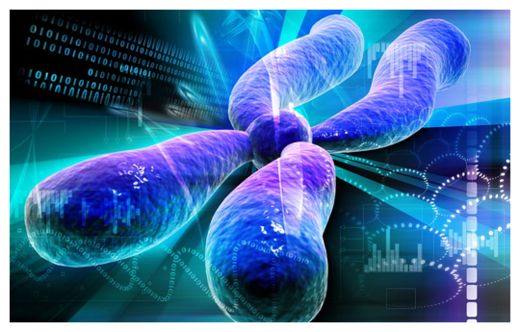
Each mammal has a pair of sex chromosomes. Females have two copies of the X chromosome, and males have one, along with a Y chromosome. The body needs only one active copy of the X chromosome, so in females, the second copy is disabled. Almost 50 years ago, a geneticist named Susumu Ohno proposed that this shutdown slowed the evolution of the X chromosome, and he predicted that its genes would be very similar across most mammals. David Page, a geneticist at the Whitehead Institute for Biomedical Research in Cambridge, Massachusetts, wanted to check if that was true between mice and humans, which are separated by 80 million years of evolution.
Although the genomes of both species had already been decoded, there were gaps and mistakes in the DNA sequence of the human X chromosome that first needed to be filled in or fixed. Using a special sequencing technique that it developed, Page's research team determined the order of the DNA bases in those gaps - many contained multiple duplicated regions of DNA that were impossible to decipher with the technology available when the X chromosome was first sequenced. Then the researchers compared the genes in the mouse and human versions of the chromosome.
The two share a majority of their 800 or so genes, Page and his colleagues report online today in Nature Genetics. Those shared, relatively stable genes are active in both males and females and exist as single copies on the chromosomes. Mutations in these previously described genes are responsible for the so-called X-linked recessive diseases such as hemophilia and Duchenne muscular dystrophy. "These are the genes of the X chromosome of textbooks," Page says.
But his team's search uncovered a different, wilder side to this chromosome as well. There are 144 human X chromosome genes with no counterparts in mice, and 197 such mice genes are unique. Of the 144 human ones, 107 exist in multiple copies in the newly sequenced duplicated regions of the X and seem to be changing rapidly. Based on such evidence, Page concludes that these genes have appeared since the ancestors of mice and humans split off from each other.
"I am surprised by the large number of unshared genes between the human X and mouse X," says Jianzhi Zhang, an evolutionary geneticist at the University of Michigan, Ann Arbor, who was not involved with the work. "The finding suggests that X chromosome gene content is probably changing all the time."
When genes change, they have the opportunity to influence evolution, and Page thinks that the new X chromosome genes may be particularly potent. Some previously identified X chromosome genes, for example, seem to have played a role in mouse speciation. He and his colleagues surveyed eight human male and female tissues to begin to see what the genes do. Unlike the textbook X genes, "in many cases these [unshared] genes are not even expressed in females," Page says. Instead, they are active in the testis, primarily in tissue destined to become sperm, Page's team reports. "We think the X chromosome is leading a double life," he says, with one part being stable and behaving as the textbooks say, and another part changing and influencing male traits.
Elsewhere in the genome, duplicated regions "are already known to be of immense biomedical significance" in cancer and other diseases, Page says. He is hoping that other researchers will start looking more closely at whether genes in the duplicated regions of the X chromosome are likewise important, particularly with respect to male fertility and testis cancer.
Zhang is cautious. "We must first know the function of these genes," he says, to understand their impact on health and on speciation. One thing is for certain, however: "People will start paying attention to the recent evolution of the X chromosome."



Reader Comments
to our Newsletter